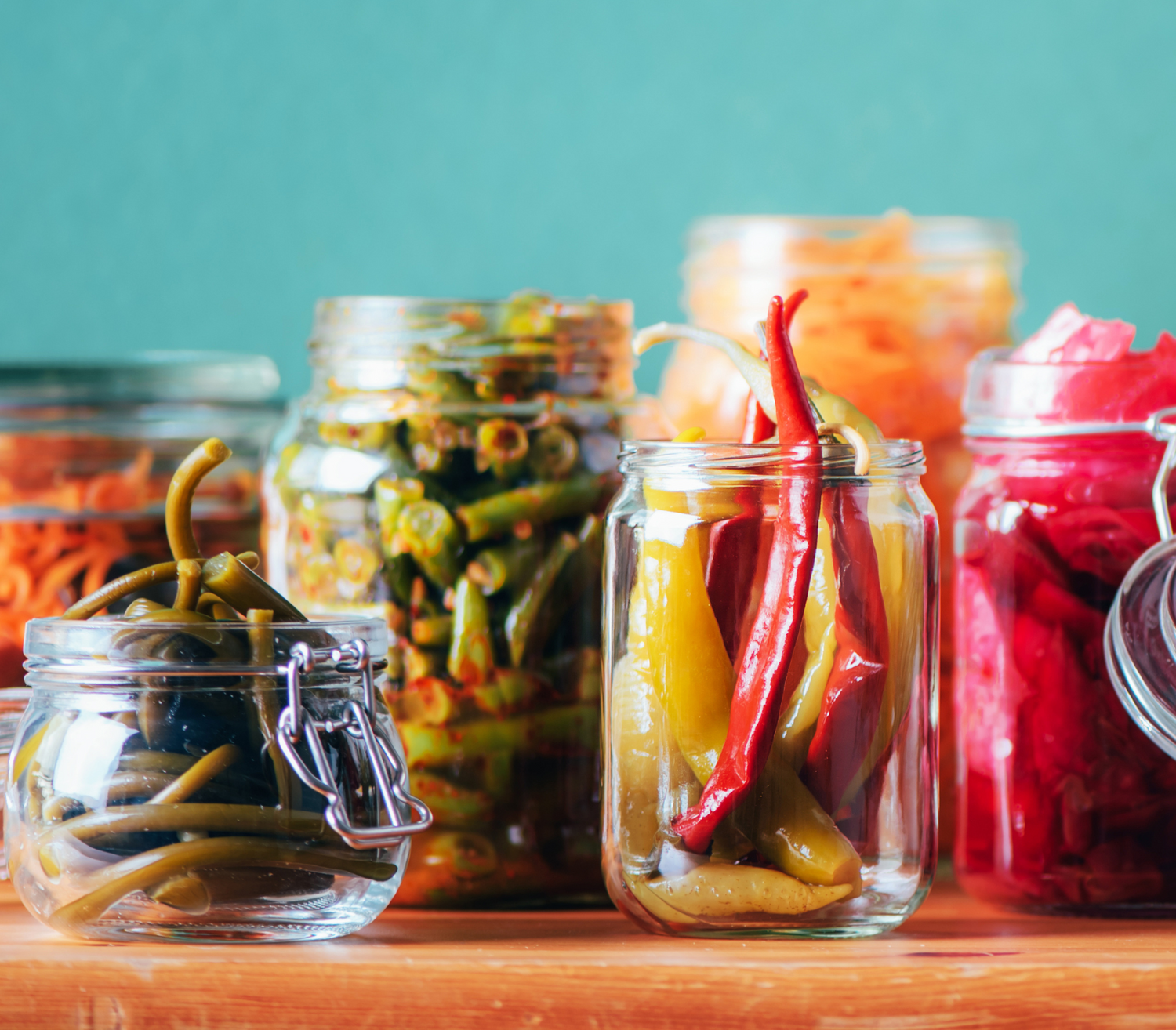Fermented foods - what’s the buzz about?
Fermented foods are those that have been produced via the action of microbes - a process known as fermentation. Before we had fridges to keep food fresh, fermentation was used as a method of preserving food for long term storage, preventing it from spoiling. It’s a technique which has been around for many thousands of years, but it’s only recently that we’ve become more interested in the impact of fermented foods on our gut health.
How does fermentation work?
Fermentation takes place when beneficial microbes (yeasts and bacteria) consume the natural sugars in foods (like fruits, vegetables and milk), producing various acids and gases. These acids lower the pH of the food, preventing harmful bacteria from growing. The microbes also produce various enzymes (special proteins) which can help with digestion. They can even make some nutrients more available for absorption.
What foods are fermented?
In the Western world we tend to think of fermented foods as being something of a delicacy - not many of us open the fridge to see a jar of kimchi or bottle of kefir, but the truth is that many of the foods we eat everyday (like bread, yoghurt and cheese) and our favourite foods (think chocolate, coffee, wine and beer) are produced via fermentation. Other ferments include tempeh, sauerkraut (sour cabbage), and olives.
Not all fermented foods contain live microbes though. Many - like sourdough bread and yoghurt - are baked or pasteurised before we eat them, which renders the microbes inactive, and the microbes in many aged cheeses die off. Fermented foods which are unpasteurised or made at home are more likely to contain live microbes. Checking the label of a fermented food will usually give you a clue - look for the words ‘live cultures’ on yoghurt, or ‘unpasteurised’ on ferments like sauerkraut.
What’s the link with gut health?
The beneficial microbes capable of fermentation belong to a big family of bacteria known as lactobacillus. As well as being found on plants and in fermented foods, various strains of lactobacillus also colonise our gut, and have been linked to some health benefits.
The theory is that by eating fermented foods, we can deliver these beneficial microbes to our gut, which will in turn have a positive impact on our health. The challenge comes in proving this theory - although we have some evidence that eating fermented foods like yoghurt and kimchi can increase levels of various beneficial species of bacteria in the gut, it’s harder to prove what effect this has on our health as a whole, or how long the bacteria take up residence. And just because we see the effects in one group of people, it doesn’t mean we can translate this to a population as a whole.
All we can say at this stage is that fermented foods may be beneficial. But over and above that, they taste great and are a brilliant way to add more diversity to your diet. Try adding fermented veggies to salads, or use some milk kefir (a bit like a drinkable yoghurt) in a morning smoothie or in overnight oats. Water kefir is a tasty alternative to sugary fizzy drinks, and I’m a fan of swapping a boozy drink for a glass of kombucha when I want a change.
Why I ferment...
My own inspiration to make fermented foods came after learning about all the ways in which we can positively impact our gut bacteria - with diet being one of the most influential factors. Alongside eating a high fibre fibre and a range of colourful plant foods, including fermented foods is a delicious way you can potentially influence your microbiome in a positive way.
The idea of growing a living food in your kitchen can be nerve wracking, but it’s actually a much easier process than you might think. Fermented vegetables are an ideal place to start as all you need is some veggies, salt, chopping skills, a bit of time and a kilner jar. It’s also cost-effective and really rewarding.
If this has left you inspired (and I hope it has!) you’re in luck, as Symprove is giving away a kilner jar and one of my favourite fermenting books to one lucky winner. I’d also recommend checking out Gutsy, who has a range of equipment, recipes and cultures for those wanting to try out kefir and kombucha. And if you want to try a ferment with a difference, try this yummy tomato salsa, and send me a snap of how you get on!
Bear in mind that fermented foods tend to be strong in taste, smell and flavour - the word sauerkraut literally translates as sour cabbage, and milk kefir can be more tangy and sour tasting than yoghurt. Don’t let this put you off though - they can be an acquired taste, but one you can grow very fond of. You might not like all ferments, the key is to find something you enjoy!
The best advice is to start slow - as with fibre, eating too many ferments at once can trigger gas and bloating as your gut adjusts. Start with a small spoonful of fermented veggies or a drizzle of kefir and see how you get on - but beware, they can become a bit of a healthy addiction!
Kevin the Kefir photo credit thanks to @gutsy_uk @gutsty_flora




